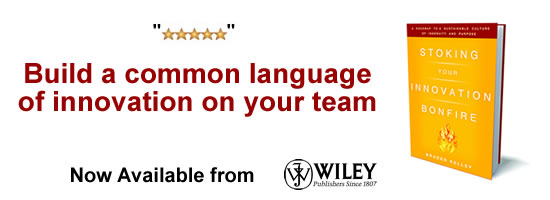Here’s Why You Should Think Twice Before Listening To Business Gurus
 Probably the hardest thing in business is to innovate consistently, year after year and decade after decade. Take a look at any industry at any point in time and you’ll find one company that seems to have hit on a secret formula only to find that ten years later that things have gone awry.
Probably the hardest thing in business is to innovate consistently, year after year and decade after decade. Take a look at any industry at any point in time and you’ll find one company that seems to have hit on a secret formula only to find that ten years later that things have gone awry.
Consider the technology industry. If you looked at the 1990’s, the “Wintel†companies like Microsoft, Intel and Compaq seemed invulnerable. A decade later though, Apple and Google reigned supreme, Microsoft had hit hard times and Compaq ceased to exist as an independent company.
That’s why business gurus often undertake studies to identify the “one true path†to success, evaluating successful firms to see what makes them tick and analyzing the mistakes of others to figure out where they went wrong. The problem is that when applied to the real world, their advice doesn’t apply as cleanly as they promise and they often contradict each other.
You Don’t Focus Enough On Your Customers Or You Focus Too Much
Peter Drucker once said that “the purpose of a business is to create a customer.†Sam Walton, the legendary founder of Walmart, put it even more emphatically when he said, “There is only one boss. The customer. And he can fire everybody in the company from the chairman on down, simply by spending his money somewhere else.â€
Yet in The Innovator’s Dilemma, Harvard professor Clayton Christensen found almost exactly the opposite. His research indicated that successful companies that fail often listen to their customers too much. When a new, disruptive technology arises, it often appeals to light or non-consumers that aren’t yet profitable for a big company.
His newest book, Competing Against Luck, seems to put the focus back on customers though, although it recommends focusing on “jobs customers want done,†rather than the customers themselves. However, it’s not quite clear which customers he’s talking about — the ones that currently pay for a product or the new disruptive kind that does not?
It’s confusing to be sure. Weren’t Coca-Cola executives focusing on their customers when research indicated that they preferred a new formula? Would a “jobs to be done†approach helped them to avoid the New Coke debacle?
You Don’t Stick To What You Do Best Or You Stick With It Too Long
Another business thinker well known for his exhaustive research is Jim Collins. In his bestselling book, Good to Great, which analyzed over two dozen companies, he introduced to hedgehog concept and suggested that outperforming companies find one thing that they can be the best in the world at, are passionate about and drives their “economic engine.
Longtime Bain consultants Chris Zook and James Allen gave similar advice in Profit from the Core, in which they argue that firms that focus on their core business significantly outperform those who stray. They also point out that there can be great growth opportunities in areas that are “adjacent to the core.â€
Again, this seems like sound advice until you start thinking about contrary examples. Wasn’t Kodak applying the hedgehog concept by maintaining its focus on photographic film, an area in which it was a global leader and which drove its economic engine? Didn’t Steve Jobs stray from his company’s core when he moved Apple into music players and smartphones.
Zook and Allen praised Enron’s ability to “shift the core to drive into new horizons,†before it came crashing down, but questioned the viability of Amazon’s move to sell products other than books. Enron is now bankrupt and a cautionary tale while Amazon is thriving. Simple rules always get more complicated when you try to apply them to the real world.
You Have An Innovation Division Or You Don’t
It’s not just gurus and consultants that offer advice about innovation. In a Businessweek interview, Apple CEO Tim Cook had this to say.
A lot of companies have innovation departments, and this is always a sign that something is wrong when you have a VP of innovation or something. You know, put a for-sale sign on the door.
Everybody in our company is responsible to be innovative, whether they’re doing operational work or product work or customer service work.
Again, it seems like sound advice until you start looking for contrary examples. IBM’s Research division has powered the company for decades, through multiple technology cycles. Experian Datalabs identifies new product lines through solving its customers problems. Google’s X division pursues moonshots to find the next great business opportunity.
Clearly, Apple has been incredibly successful since Steve Jobs returned to the company, but it doesn’t seem like IBM, Google or Experian are likely to put a “for-sale sign†on the door anytime soon. Also, while these companies seem to be be breaking new ground in areas like data and artificial intelligence, Apple hasn’t introduced a hit product since 2007.
So who has the right model? It’s hard to say. Simple rules rarely apply to a messy world.
The One Thing That Really Separates Great Innovators From The Rest
When I began researching my book, Mapping Innovation, I studied a wide variety of innovators, from major corporations to world class labs to exciting startups and found a wide ranging set of philosophies and practices. In fact, they seemed to have little in common besides the fact that they were great innovators.
Some invested heavily in research, some did not. Some focused on their core businesses, while others created completely new models that led them into uncharted waters. Some focused on their customers, while others pursued other goals, such as curing diseases or solving difficult technical problems. No simple rules applied.
Yet as time went on one common theme began to emerge. Great innovators constantly seek to identify new problems. The manner in which they did that took on a myriad number of forms: talking to customers, engaging with the scientific community, identifying new markets for existing technology or whatever, but that single theme stayed constant.
So if you want to make your organization more innovative or become more innovative yourself, the best place to start is to look for a problem worth solving, then go figure out what solution fits it best. Revolutions don’t begin with a slogan. They begin with a cause.
– Greg
An earlier version of this article first appeared in Inc.com
Wait! Before you go…
Choose how you want the latest innovation content delivered to you:
- Daily — RSS Feed — Email — Twitter — Facebook — Linkedin Today
- Weekly — Email Newsletter — Free Magazine — Linkedin Group
 Greg Satell is a popular speaker and consultant. His first book, Mapping Innovation: A Playbook for Navigating a Disruptive Age, is coming out in 2017. Follow his blog at Digital Tonto or on Twitter @Digital Tonto.
Greg Satell is a popular speaker and consultant. His first book, Mapping Innovation: A Playbook for Navigating a Disruptive Age, is coming out in 2017. Follow his blog at Digital Tonto or on Twitter @Digital Tonto.
NEVER MISS ANOTHER NEWSLETTER!
LATEST BLOGS
Three things you didn’t know about credit cards
Photo by Ales Nesetril on Unsplash Many of us use credit cards regularly. From using them for everyday purchases to…
Read MoreFive CV skills of a business-minded individual
Photo by Scott Graham on Unsplash The skills listed on a CV help employers quickly understand your suitability for a…
Read More


